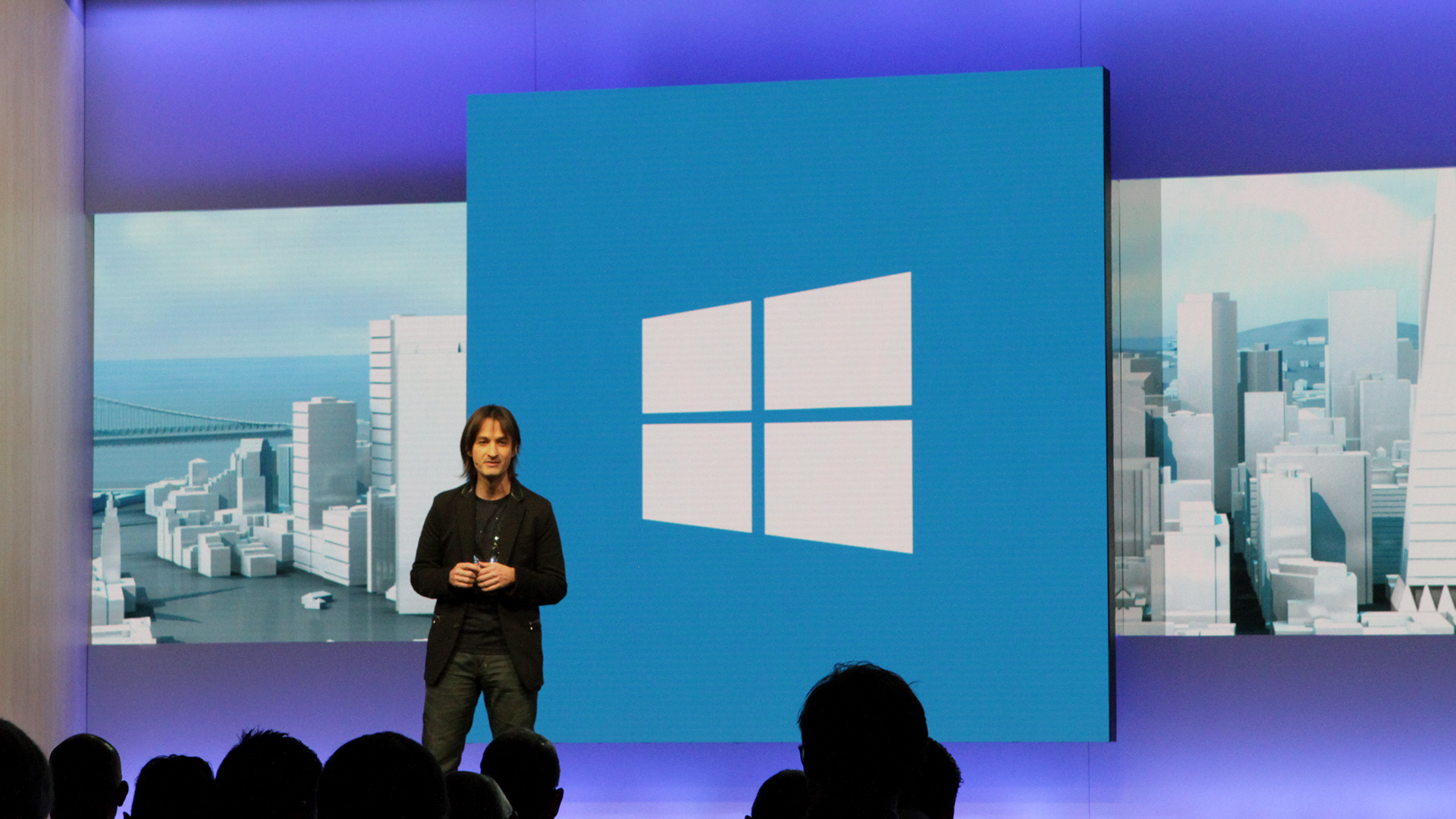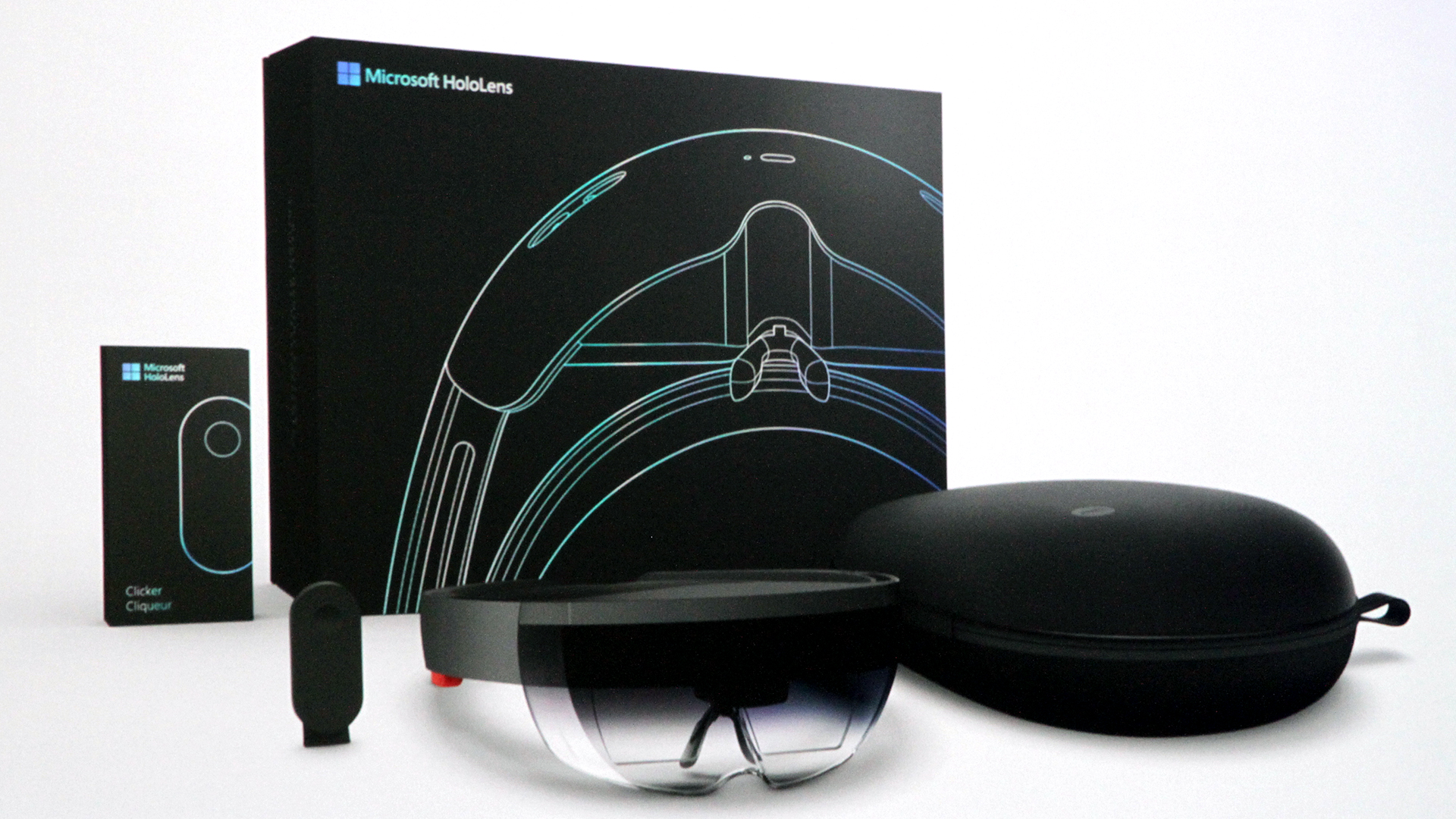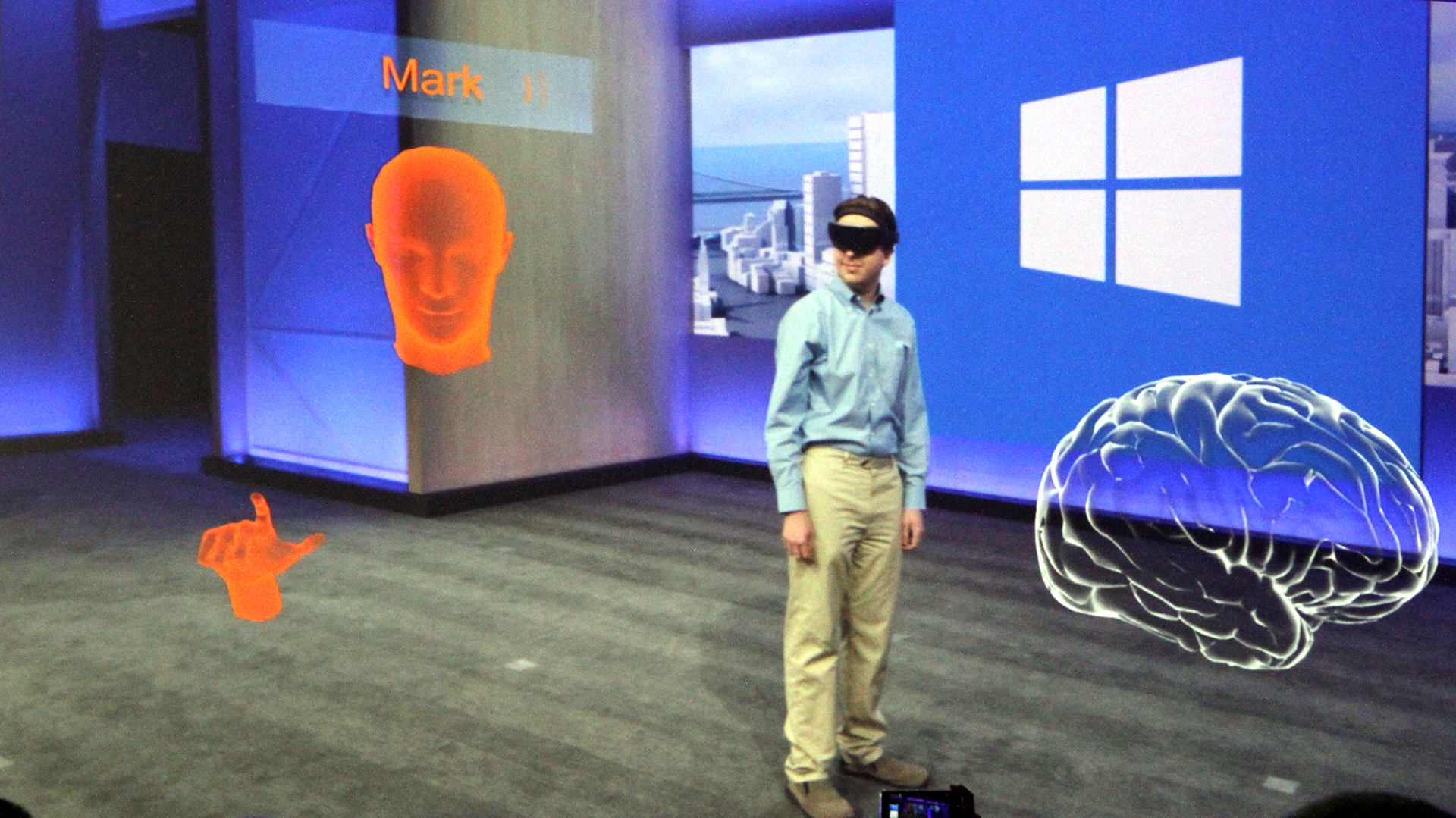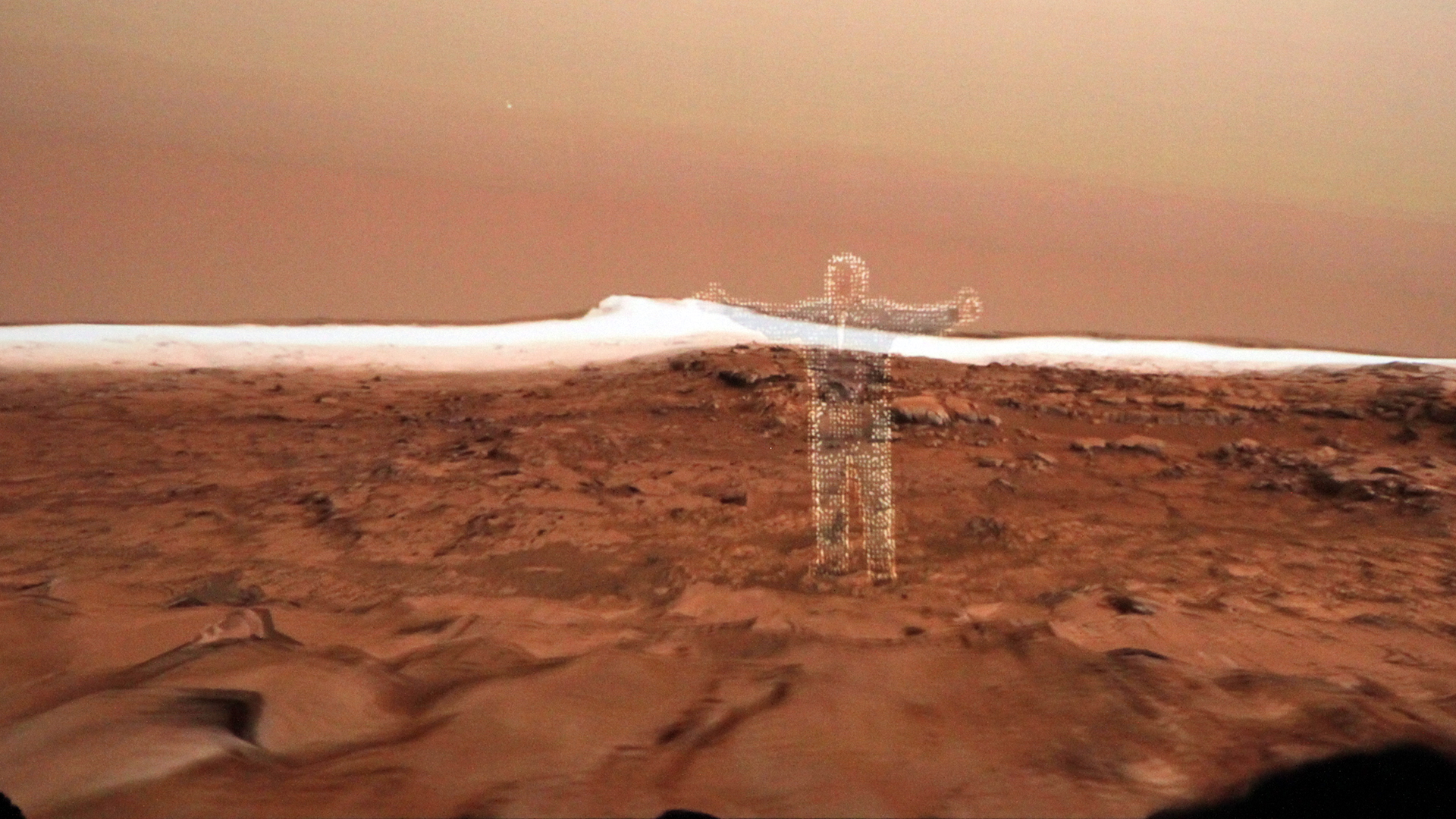HoloLens Dev Kits Ship Today, Still $3,000
From the stage at Microsoft Build, HoloLens chief Alex Kipman delivered the news that HoloLens developer kits are shipping today.
The device costs $3,000, and they’re available only to Windows Insiders in the U.S. and Canada (for now). The first wave is heading out today, and Microsoft said that it will continue to offer invites to applicants as more devices are available.
Kipman also announced that an app for HoloLens called Galaxy Explorer is coming to the Windows Store, with code available for free on GitHub. Simply put, Galaxy Explorer lets you virtually explore the Milky Way. You can navigate, “land” on a planet, zoom in or out, and more.
We will certainly hear more about HoloLens throughout the week here at Build, but Kipman teased some improvements. One onstage demo showed Case Western Reserve students--here, in the hall--being taught about anatomy by a professor back at the university. The students, wearing HoloLens HDMs, had a see-through 3D image of the human anatomy in front of them. The professor could see what they were seeing, and he appeared to them as a floating orange head, with a floating orange hand as a pointer. The head did not move...it was a static avatar. (“This feels really natural,” he read robotically from a script.) Still, it was compelling to see people able to remotely collaborate and learn in such a way.
Another experience, called “Destination Mars,” is coming from the NASA Jet Propulsion Laboratory (JPL), wherein--you guessed it--you get to experience the surface of Mars from the point of view of a Rover. It’s hosted by a virtual Buzz Aldrin (“Hi there, I’m Buzz Aldrin,” he says).
If the price tag of the HoloLens, and the lack of available experiences compared to the Rift and Vive, is throwing you off, don’t give in to the temptation. HoloLens is a totally different beast, not to mention the fact that it’s fundamentally AR, not VR. It’s also, yes, a bit behind the premiere VR HMDs, but Microsoft has bigger plans for HoloLens.
Those plans include rich communications, such as Skype. Microsoft knows that some of its best IP involves communications (Skype, Outlook), and it’s planning to leverage HoloLens technology to make take them to the next level.
Get Tom's Hardware's best news and in-depth reviews, straight to your inbox.
Seth Colaner is the News Director for Tom's Hardware. Follow him on Twitter @SethColaner. Follow us on Facebook, Google+, RSS, Twitter and YouTube.
Seth Colaner previously served as News Director at Tom's Hardware. He covered technology news, focusing on keyboards, virtual reality, and wearables.
-
turkey3_scratch Reply17741029 said:I'd rather go with a more budget-oriented product like the HTC Vive.
They serve totally different purposes. -
DeadlyDays ReplyI'd rather go with a more budget-oriented product like the HTC Vive.
HoloLens Dev Kits -
NightLight I gotta say, I'm in awe of this. I'm as excited as I was when I upgraded from my 486 to my Pentium II-233 with 3dfx voodooIIReply -
wifiburger this HoloLens stuf is boring and technically unimpressive. I'll buy a VR headset before even considering this HoloLens and I actually hate VRReply -
"Microsoft has bigger plans for HoloLens". Microsoft had big plans for the Zune, Windows Vista, Windows 8, and the Windows phone.Reply
This will absolutely go nowhere. It's just a waste of time and energy. VR has no future, except niche. Remember 3D televisions? Who, that owns one, actually spends 30 minutes a month wearing the glasses?
If you have to but something heavy on your head, you won't do it. If you need a top of the line computer, it won't happen. If it's over $500, few will make that commitment. But those that do, will end up playing with that gadget for a few hours, then place it back on the shelve where it will collect dust. -
scolaner Reply"Microsoft has bigger plans for HoloLens". Microsoft had big plans for the Zune, Windows Vista, Windows 8, and the Windows phone.
This will absolutely go nowhere. It's just a waste of time and energy. VR has no future, except niche. Remember 3D televisions? Who, that owns one, actually spends 30 minutes a month wearing the glasses?
If you have to but something heavy on your head, you won't do it. If you need a top of the line computer, it won't happen. If it's over $500, few will make that commitment. But those that do, will end up playing with that gadget for a few hours, then place it back on the shelve where it will collect dust.
Fair points, although I completely disagree about the future of VR. Also, you're conflating VR HMDs (Rift, Vive) with AR HMDs (HoloLens, Meta 2). Totally different purposes, totally different use cases.
Also, note that the HoloLens is a totally untethered device. No PC. No wires. (It is a little heavy, though.)
More on HoloLens: http://www.tomshardware.com/news/hololens-demo-microsoft-build-2016,31518.html




